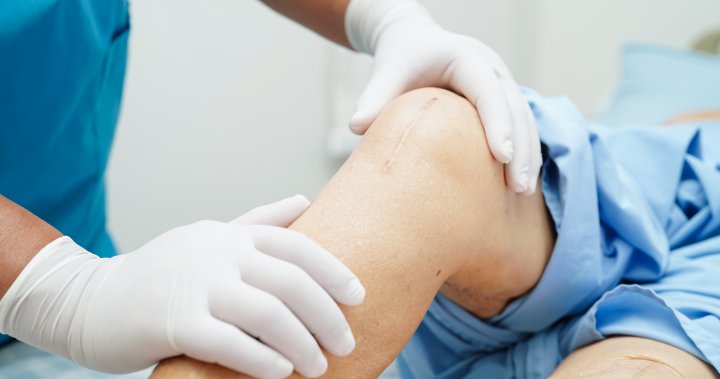One in three Canadians who need a new hip or knee are waiting longer than they should, but instead of relying on private clinics, a more centralized referral system can help correct the backlog, researchers say.
A study published Tuesday in the Journal of Medical Association of Canada (CMAJ) found that organizing referrals and surgery through a coordinated team-based approach could help with long waiting times for hip and knee replacements.
“Canada performs poorly for access to scheduled surgeries. Access to care is a weakness in the Canadian health system. This was truly the Achilles Heal of the Canadian health system.”
“But the good news is there are very good solutions. They're not difficult. They're not expensive.”

Reducing waiting times for hip and knee replacement surgery can be as simple as reorganizing the way patients are referred to the surgeon. No additional operating rooms, surgeons or additional funds are required.
In Canada, benchmark waiting times for hip and knee replacement surgery are 182 days – 6 months.
According to the latest data from the Canadian Institute of Health Information, approximately 66% of patients undergo surgery inside their windows. But even so, a third is still waiting for a long time.
For knee replacements, the number is even lower, with only 59% getting the procedure within six months.

Get weekly health news
Receive the latest medical news and health information provided every Sunday.
To address this issue, several Canadian provinces have experimented with commercial private delivery of several surgeries to facilitate waiting times.
However, the study suggests creating a central list, saying that latency could have an effective effect.
How to reduce waiting times
For many Canadians, the process of undergoing knee or hip surgery begins with a “direct doctor-to-doctor referral,” Arbitch explained.
This means that your doctor will refer you to a specialist, but you may not know if it is the right or the next available.
Most surgeons work as independent practitioners and manage their own waitlists for consultation and surgery. Research shows that when a surgeon assumes a patient for a procedure, he usually doesn't share care with other surgeons.
To see if there is a better way to tackle long waits, the researchers looked at several different inspiratory models aimed at ensuring patients viewed faster.
Using Ontario data, they divided things into three models of care.

Trend now

“Are I gonna die?”: After 71 days of legal trials in the Dominican Republic, Ontario man returns home

A widespread bell suspension has been fixed, as the company says updates are responsible
This study focused on patients referred to by their family physician or general practitioner in 2017 for emergency hip or knee replacements. In total, the simulation is based on 17,465 surgeries performed on 17,132 patients, with 7,783 referral doctors, 274 surgeons and 71 hospitals involved in five regions of Ontario.
The model includes:
Single input introduction model. This is when referrals for all the patients in the area are pooled together and then directed for consultation with the available surgeons, rather than being sent individually to a particular surgeon. After consultation, patients requiring surgery will enter a shared area queue and instead of waiting for a particular surgeon, they will be scheduled for surgery on the next available date with the local surgeon. This combines both a single admission referral and a team-based care model. Patients are pooled in a single queue for both consultation and surgery, and at each step the next available surgeon is shown.
Both the team-based and fully integrated models had a much greater impact on lower latency than the single-entry referral model, the study found.
“The best model is when surgeons work together as teams, share patient care together, and patients are referred to the team,” Arbitch said.
“So they will be seen by the next available surgeon for consultation. And when it's time to have surgery, they will also undergo surgery by the next available surgeon.”

That's what everyone needs to do to prevent long waits for joint replacement surgery, he added.
He also emphasized that in these models all surgeons are qualified and are experts in the operations they do.
“The adoption of these models requires strong leadership between active participation of healthcare system leaders and surgeons,” the study concluded. “And also, we will need to invest in systems infrastructure rather than just one-time investments to increase surgical volumes during times of crisis.”
More Video Details
&Copy 2025 Global News, a division of Corus Entertainment Inc.

